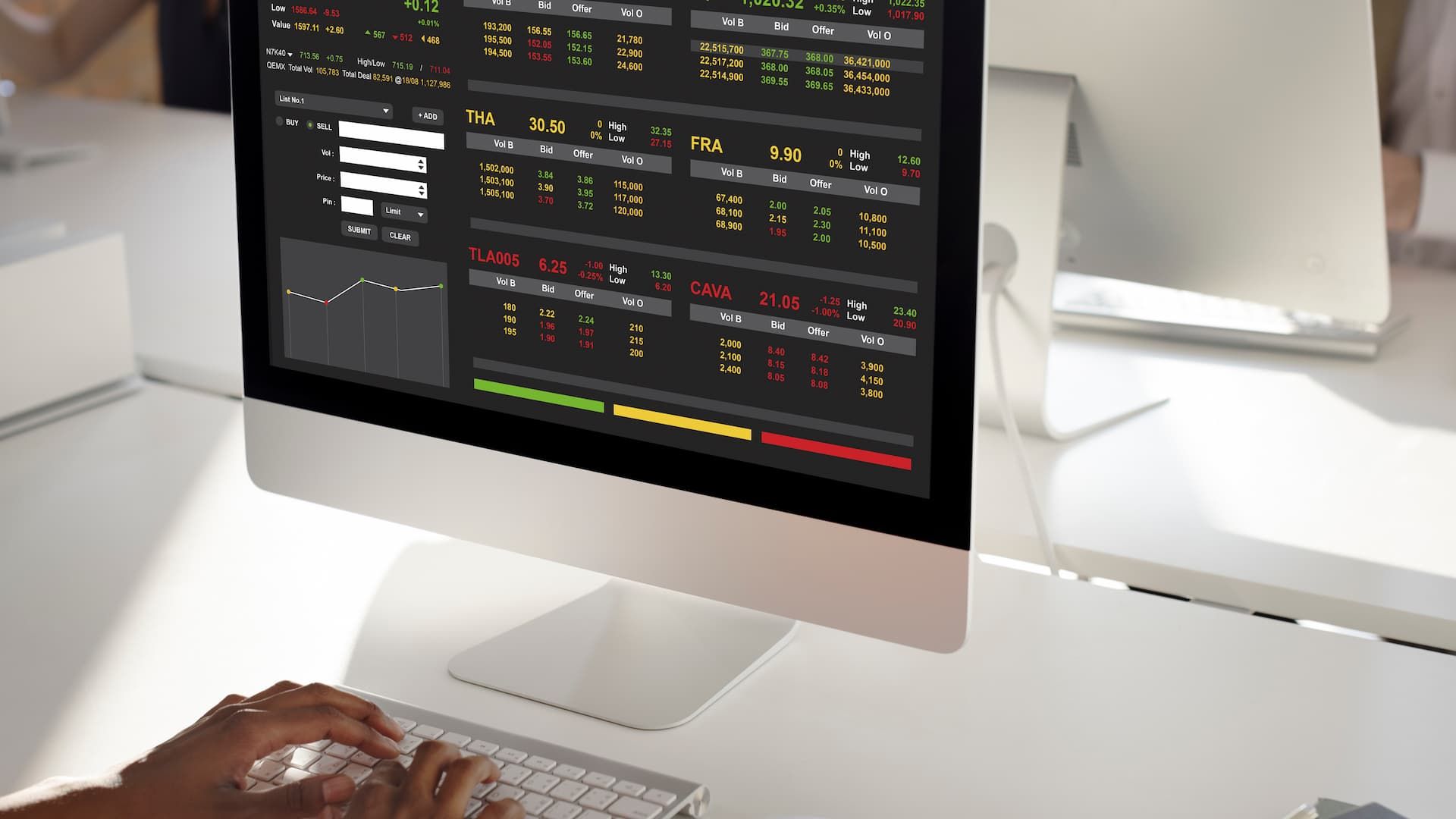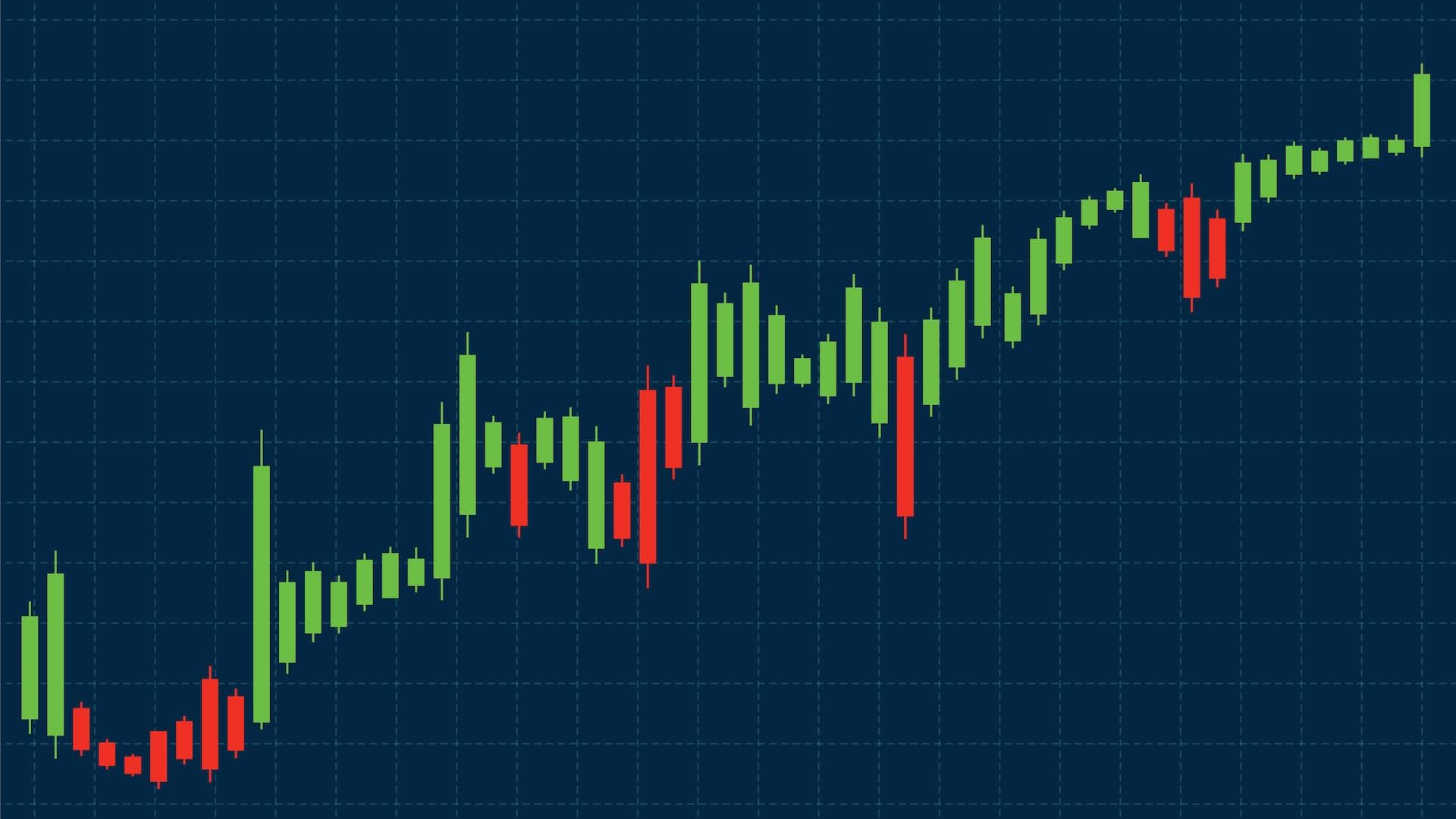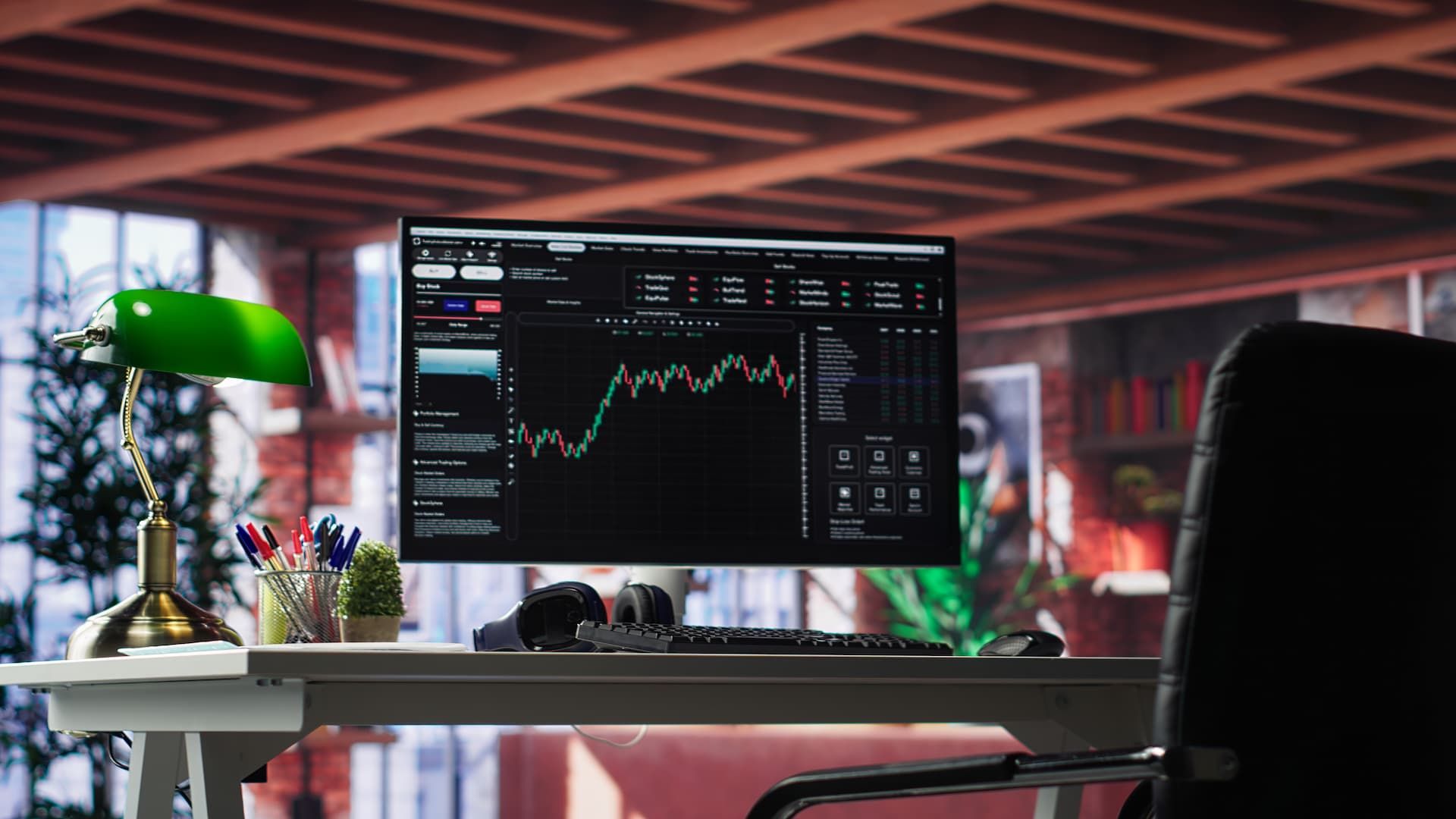The words “trading” and “investing” are often used interchangeably, but they describe two very different approaches to building wealth in financial markets. Both involve buying and selling assets like stocks, bonds, or funds, yet the timeframes, objectives, and strategies behind them are worlds apart.
Think of investing as planting a tree, patiently waiting for it to grow and bear fruit over the long haul. This is where people invest with the mindset of letting their money compound over years or even decades. Along the way, investors may pay other fees like management charges, fund fees, or transaction costs, but the focus remains on steady, long-term growth.
Trading, on the other hand, is more like surfing; you look for the right wave, jump in quickly, and aim to exit before the tide turns. The objective is short-term profits rather than holding assets over the long haul.
For beginners trying to make sense of where to start, understanding these differences is crucial. In this guide, we’ll break it down step by step, explain key concepts, and give real examples so you can decide whether trading, investing, or a combination of both fits your financial goals.
Overview: Trading vs investing
Defining stock trading vs long-term investing
Stock trading is about short-term moves. Traders seek to profit from fluctuations in prices that may occur over minutes, hours, or days. Many traders also explore options trading as a way to leverage positions or hedge risks, sometimes committing a significant amount of capital to maximize potential returns.
Investing is long-term. Investors focus on buying assets with the belief that they will increase in value over years or decades, often reinvesting dividends to fuel compounding growth.
Why the distinction matters (timing, risk, goals)
The main differences lie in timing, risk appetite, and objectives. Traders often pursue rapid profits but must accept higher volatility and stress. Investors usually aim for steady growth, sacrificing short-term excitement for long-term financial security.
Stock trading and day trading: Active trading explained
What is day trading, and how does it differ from passive investing?
Day trading means buying and selling within the same day. Unlike passive investors who hold positions for years, day traders rarely sleep with open trades. They depend on real-time charts, fast execution, and technical signals to make decisions. Some also engage in trading options to take advantage of short-term price movements or hedge existing positions.
Who are the experienced traders?
Experienced traders range from independent professionals to hedge fund managers. They thrive in volatile conditions, constantly analyzing charts and market news. Many platforms now provide free access to market data and educational tools, allowing beginners to learn techniques before they start investing with real capital.
Required skill set: technical analysis, rapid decision-making
Day traders need sharp analytical skills, discipline, and the ability to stay calm under pressure. Technical analysis, chart patterns, momentum indicators, and volume signals are their compass.
Regulatory thresholds (pattern day trader rules, margin requirements)
In markets like the US, traders who execute multiple daily trades may fall under the “pattern day trader” rule, requiring minimum account balances. Margin requirements also apply, since leverage amplifies both gains and losses.
Active trading vs long-term growth
Benefits of active trading: quick gains and adaptability
The biggest attraction of active trading is speed. Traders can profit in rising or falling markets, adapting quickly to new information. For those buying stocks or other assets, active trading allows them to respond to market changes without being locked into long-term positions.
Advantages of investing and trading coexist
Many successful individuals combine both approaches. They keep a core portfolio for long-term growth while using trading for short-term opportunities. It’s important to remember that past performance does not guarantee future results, and each decision should reflect your overall financial situation.
Synergizing both strategies in one portfolio
For example, you might invest steadily in index funds while occasionally trading tech stocks during earnings season. This balanced approach lets you benefit from both stability and flexibility.
Trading and investing in mutual funds and stocks
Mutual fund investing: How it supports long-term growth
Mutual funds pool money from many investors and spread it across a wide range of assets. They’re a popular choice for long-term investing because they reduce risk through diversification. However, it’s important to understand the risks involved, including market fluctuations and potential losses, even in well-diversified funds.
Share price movement: how traders and investors interpret changes
When a stock rises, an investor may see confirmation of long-term growth potential, especially if following a buy-and-hold strategy. A trader, however, may look for signs to exit before momentum slows or adjust positions in a margin account to increase exposure.
Dividend reinvestment vs trade-based speculation
Investors often reinvest dividends to compound returns. Traders, instead, focus on capturing short-term price differences, with dividends being less relevant. Understanding these different approaches helps investors balance growth goals with the risks involved.
Technical analysis vs fundamental analysis
Role in active trading and day trading
Traders rely heavily on technical analysis: charts, moving averages, oscillators, and price action. Most active trading is conducted through a brokerage account, which allows quick execution and access to a wide range of financial instruments.
Relevance for long-term investing decisions
Investors prefer fundamental analysis, studying company earnings, net asset value, management quality, and long-term industry trends. These decisions are often made within a retirement account, which emphasizes steady growth and compounding over time.
Which analysis works better for different objectives?
Neither method is superior. Technicals help with timing entries and exits, while fundamentals guide overall investment choices. Many investors use both, balancing trades in a brokerage account with longer-term holdings in a retirement account to align with different financial goals.
Short selling: A trader’s strategy
What is short selling in stock trading?
Short selling involves borrowing underlying securities to sell them now, with the goal of buying them back later at a lower asset's price. Traders profit if the price falls, but must also account for any dividend payments due on the borrowed shares while the position is open.
Risks and mechanics for both traders and investors
While shorting can bring profits during downturns, losses are theoretically unlimited if the asset's price rises. This makes it riskier than traditional long investing, as traders are exposed to potential obligations on dividend payments and must carefully monitor the underlying securities they borrow.
Investing and trading: How to choose?
Identify your financial goals: active trading vs long-term growth
Ask yourself whether your aim is fast profits through successful trading or building wealth for retirement, education, or lifestyle goals. For traders, this may involve short-term speculation on company stocks or using margin trading to amplify potential returns.
Risk tolerance and emotional readiness
Trading requires emotional resilience, quick reactions, and a high tolerance for risk. Investing rewards patience and consistency. Understanding your comfort with margin trading and potential exposure is crucial for sustainable strategies.
Costs, taxes, and performance differences
Traders face more transaction costs and short-term tax rates, particularly when frequently trading company stocks. Investors may benefit from lower long-term capital gains taxes while holding positions for years.
Key differences at a glance
Time horizon: days vs decades
Traders think in days or weeks, while investors plan for decades. Short-term trading focuses on capturing price moves over very short windows, for example minutes, hours, or a few days, and requires constant monitoring of positions and market news. Long-term investing centers on building wealth over years and decades by compounding returns, reinvesting dividends, and staying invested through market cycles. That difference in timeframe changes everything: it affects portfolio construction, tax treatment, rebalancing frequency, and how you measure success. If your goal is retirement or funding a child’s education, the multi-decade approach of investing typically wins on predictability and tax efficiency. If your objective is generating supplemental income or exploiting short-term volatility, trading may fit better, but it demands different capital allocation and a plan for rapid execution and risk limits.
Cost structures and impact of fees
Frequent trading incurs higher costs, while long-term investing benefits from compounding with lower expenses. Traders pay for every round trip through commissions, wider spreads, slippage, and, when using leverage, financing and margin interest. Those costs can quickly erode gross profits, so controlling transaction costs and execution quality is vital. Investors face different friction: mutual fund expense ratios, advisory fees, and occasional transaction charges, but lower turnover means these costs compound more slowly and have a smaller drag on growth over time. Importantly, even small differences in annual fees or expense ratios can translate into large differences in outcomes when left to compound for decades. To improve net returns, traders should prioritize low-latency execution and narrow spreads, while long-term investors should favor low-cost index funds, tax-efficient accounts, and a buy-and-hold mindset that minimizes needless transactions.
Psychological demands and discipline are required
Traders need intense focus and stamina. Investors require patience and the ability to stay calm through downturns. Active trading exposes you to rapid decision-making, emotional spikes, and the temptation to overtrade; managing these pressures requires strict risk rules, disciplined position sizing, and a routine that includes journaling and reviewing past trades. Day traders benefit from a clear playbook for entries and exits, plus automated safeguards such as stop-loss orders to limit downside. Long-term investors face a different kind of test: sticking to an allocation through bear markets, avoiding panic selling, and resisting tempting market timing moves that interrupt compounding. Both approaches reward discipline, but the daily mental load is heavier for traders while the long-term investor’s challenge is behavioral consistency. For beginners who want to explore active strategies without risking too much capital, demo accounts and reputable platforms that offer reliable real-time data and charting can be invaluable; platforms like 24markets.com provide tools that help traders practice execution while investors track their portfolios.
Summary table or quick checklist
A quick checklist might include:
- Time horizon: short vs long
- Strategy: speculation vs compounding
- Risk: high vs moderate
- Skills: technical vs fundamental
- Goal: quick profits vs steady wealth
Tools and strategies for both approaches
Tools for day trading: real-time platforms, charts, stop-loss setup
In day trading, speed and accuracy are very important, and that is why traders need trusted platforms like 24markets.com that will deliver real-time prices so that traders can take action without any delay. Charts are very important as well, because they are essential for spotting patterns and trends, and that's why you need a platform where you can customize them to your strategy. Stop-loss orders are not optional. They are your safety net, that's why they are so important, as they protect you from sudden moves that make you lose your capital. By combining these tools, you would be able to make decisions quickly, manage risk, and maintain control even in a fast-moving market.
Tools for long-term investing: mutual funds, portfolio tracking, compounding calculators
If you decide to go for long-term investing, then you have to get prepared for a totally different rhythm. Your goals will change from immediate profits to steady growth. Mutual funds make it easier to spread investments across different companies and industries, which reduces risk. But is very important to keep track of your portfolio, to see how each investment is performing and whether it aligns with your goals. Some important tools you can use in this case are the Compounding calculators, because they illustrate how even small, consistent investments can grow substantially over time. Together, these tools help investors make deliberate decisions without being swayed by short-term market noise.
Trading vs investing: shared aspects
Both involve participation in financial markets
One shared aspect is that both these actions contribute to the overall market. Every trader contributes by adding liquidity, which helps other market participants buy or sell without major price disruptions. In this way, both traders and investors support the smooth operation of the markets.
Both strategies rely on understanding share price drivers and fundamentals
Knowing what drives the process is crucial. That's why knowing that earnings reports, changes in interest rates, and major economic or geopolitical events can affect the value of assets is very important. The difference is that Day traders need to react quickly to those events, while long-term investors consider them in the context of overall portfolio growth. But in both cases, understanding these factors and their influence can make the difference.
Liquidity, market efficiency, and how both contribute to market function
Both approaches keep markets efficient. Frequent trading helps prices reflect current information, while investment decisions guide capital toward productive companies. Traders and investors together ensure smoother price discovery and prevent extreme volatility. Their combined activity allows markets to function reliably, benefiting all participants.
Advanced considerations
Impact of market volatility
Volatility offers opportunities for traders but can test investors’ patience. Even professional traders must recognize that rapid swings in the stock market can cause them to lose money if they are not careful.
Technical signals vs. macro fundamentals
A trader may sell after spotting a bearish pattern, while an investor may hold because fundamentals remain strong. Understanding the balance between short-term signals and long-term fundamentals helps avoid unnecessary losses in the stock market.
When to switch between trading and investing modes
Some market conditions favor short-term trading, while others reward long-term patience. Adopting a flexible approach allows both beginners and professional traders to navigate the stock market without taking on excessive risk that could lose money.
How to start?
For beginners: managing expectations between active trading and investing
Beginners should be realistic: trading is not a guaranteed path to riches, and investing requires time to see the market value of financial assets grow. Understanding that stock prices fluctuate daily can help set realistic goals for both trading and investing.
Learning resources and simulations
Platforms like 24markets.com offer demo accounts and education centers where you can practice trading, explore investing tools, and learn at your own pace. These tools often allow you to track financial assets and their market value, helping you understand how stock prices respond to different conditions.
Building a hybrid strategy with both approaches
You don’t have to choose one over the other. A hybrid plan that blends steady investments with occasional trades can balance risk and reward while keeping an eye on stock prices and overall market value of your financial assets.













